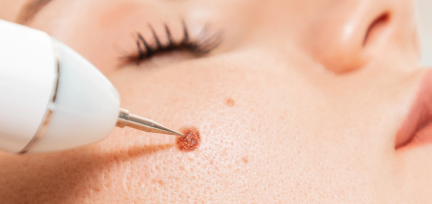Skin tags, small, benign growths that often appear on the neck, armpits, and other areas of the body, can be a cosmetic concern for many individuals. While they are generally harmless, their presence can be bothersome. If you're considering skin tag removal treatment(علاج إزالة علامات الجلد), it's important to understand your options and what works best for your needs. This comprehensive guide will explore various methods for removing skin tags, discuss their effectiveness, and provide insights into what you can expect from each treatment.
Understanding Skin Tags
What Are Skin Tags?
Skin tags, also known as acrochordons, are soft, flesh-colored growths that hang off the skin. They are composed of collagen fibers and blood vessels surrounded by a thin layer of skin. Skin tags are common and can vary in size, shape, and color. They often develop in areas where skin rubs against skin or clothing.
Why Do Skin Tags Form?
The exact cause of skin tags is not fully understood, but they are commonly associated with factors such as obesity, diabetes, and hormonal changes. They tend to form in areas where friction occurs, which suggests that friction or irritation may play a role in their development.
Methods for Skin Tag Removal
When it comes to skin tag removal treatment, there are several options available, ranging from at-home remedies to professional procedures. Each method has its own set of benefits and considerations.
At-Home Remedies
1. Over-the-Counter Products
Many over-the-counter products are designed to remove skin tags. These products usually contain ingredients that freeze or dry out the skin tag. Common examples include:
- Cryotherapy Kits: These use freezing methods to eliminate skin tags by applying a freezing solution to the affected area.
- Chemical Solutions: These products contain acids or other chemicals that help to dissolve the skin tag over time.
While these products can be effective, they may also cause irritation or discomfort. It is crucial to follow the instructions carefully to avoid adverse effects.
2. Natural Remedies
Some people prefer natural remedies for skin tag removal treatment. Popular options include:
- Tea Tree Oil: Known for its antibacterial properties, tea tree oil is applied directly to the skin tag. It is believed to help dry out and remove the tag.
- Apple Cider Vinegar: This natural acid is used to soak the skin tag, which may help to break it down over time.
Natural remedies can be less invasive but may require longer periods of use to achieve results. Additionally, they might not be as effective for larger or more stubborn skin tags.
Professional Procedures
1. Cryotherapy
Cryotherapy involves freezing the skin tag with liquid nitrogen. This method effectively destroys the skin tag by causing it to fall off. Cryotherapy is commonly performed by dermatologists and is known for its quick results.
2. Electrosurgery
Electrosurgery uses high-frequency electrical currents to burn off the skin tag. This procedure is precise and minimizes bleeding. Electrosurgery is effective for removing skin tags and often requires minimal recovery time.
3. Ligation
Ligation involves tying a small band around the base of the skin tag to cut off its blood supply. Without blood flow, the skin tag gradually falls off. This method is effective for removing skin tags in various areas of the body.
4. Excision
Excision is a surgical procedure where the skin tag is cut off using a scalpel. This method is often used for larger or more complex skin tags. Excision is performed under local anesthesia, and recovery time can vary.
Choosing the Right Treatment
Factors to Consider
When selecting a skin tag removal treatment, consider the following factors:
- Size and Location: Some methods are better suited for specific sizes and locations of skin tags.
- Pain Tolerance: Different treatments vary in terms of pain and discomfort.
- Recovery Time: Consider the downtime required for each treatment and how it fits with your lifestyle.
Consulting with a Professional
While many treatments can be performed at home, consulting with a healthcare professional can provide valuable guidance. They can help determine the most appropriate method based on your specific needs and health conditions.
What to Expect After Treatment
Healing and Aftercare
Regardless of the method used, proper aftercare is essential for optimal results. Follow these general tips:
- Keep the Area Clean and Dry: Prevent infection by keeping the treated area clean and dry.
- Avoid Picking or Scratching: Allow the area to heal naturally without interference.
- Monitor for Complications: Watch for signs of infection or abnormal healing, and seek medical advice if needed.
Possible Side Effects
Some common side effects of skin tag removal treatment include:
- Redness and Swelling: Temporary redness and swelling may occur around the treated area.
- Scarring: Depending on the method, some scarring may be visible. Proper aftercare can help minimize scarring.
Conclusion
Choosing the right skin tag removal treatment involves understanding the various options available and considering factors such as effectiveness, pain, and recovery time. Whether you opt for at-home remedies or professional procedures, it is essential to weigh the benefits and risks associated with each method. By following proper aftercare and monitoring the treated area, you can achieve satisfactory results and address any concerns related to skin tags effectively.





Comments